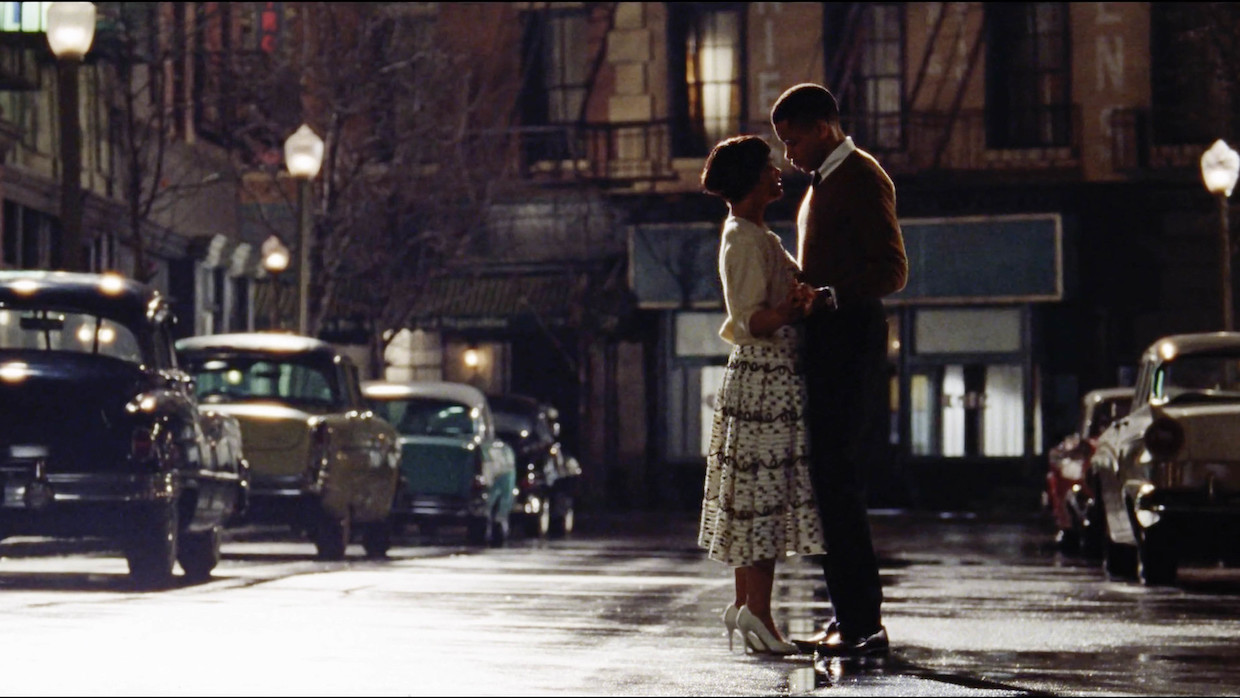 Back to selection
Back to selection
“On Super 16 There is a ‘Baked In’ Feel”: DP Declan Quinn on Sylvie’s Love
 Tessa Thompson and Nnamdi Asomugha appear in Sylvie’s Love by Eugene Ashe (courtesy of Sundance Institute)
Tessa Thompson and Nnamdi Asomugha appear in Sylvie’s Love by Eugene Ashe (courtesy of Sundance Institute) The summer of 1957 in New York City serves as the backdrop of Eugene Ashe’s Slyvie’s Love, a story of music and romance that centers around Sylvie, a young woman waiting for her fiancé to return from war, passing the time by working at her father’s record store. However, when the charming musician Robert walks in looking for a day job to support his career as a saxophonist, Slyvie’s head is turned. They embark on a long, whirlwind romance, even as Robert books his first concert overseas. DP Declan Quinn speaks about the various musical and period influences on Sylvie’s Love and the technical approach used to achieve its desired aesthetic feel.
Filmmaker: How and why did you wind up being the cinematographer of your film? What were the factors and attributes that led to your being hired for this job?
Quinn: I do not specifically know how I came to be considered by Eugene Ashe. Usually, the director and/or producer will have seen something in my previous work that resonates for them. But I think it is that first meeting when you know if there is going to be a chemistry. I think Eugene and I gelled right away on what the heart of the film was. I then had a lovely conversation with producer Nnamdi Asomugha and I was on.
Filmmaker: What were your artistic goals on this film, and how did you realize them? How did you want your cinematography to enhance the film’s storytelling and treatment of its characters?
Quinn: Eugene had a clear vision: to emulate the romantic feel and texture of the musical films from 50 years ago or more.
Filmmaker: Were there any specific influences on your cinematography, whether they be other films, or visual art, or photography, or something else?
Quinn: Musical Films Like Pal Joey, Paris Blues, Breakfast at Tiffany’s, Sparkle and Mahogany.
Filmmaker: What were the biggest challenges posed by production to those goals?
Quinn: We had a tight schedule.
Filmmaker: What camera did you shoot on? Why did you choose the camera that you did? What lenses did you use?
Quinn: We shot on Kodak film on the Arri 416 Super 16mm film with Zeiss 16mm Ultraprimes. Eugene and I liked the idea that the 16mm format, along with the inherent film grain, would make us feel like the film was from another time.
Filmmaker: Describe your approach to lighting.
Quinn: While we used direct “hard” light at times to emulate older film styles, we did not want to marry ourselves to that style. So we took it scene by scene. With the exception of the night club scenes, we did not use much color on the lights which is what the old movies did too.
Filmmaker: What was the most difficult scene to realize and why? And how did you do it?
Quinn: The Blue Morocco night club. We got access to the space at midnight. So that we could start shooting by late morning, the art department, grip, sound and lighting teams had to create a working 1962 nightclub in very few hours.
Filmmaker: Finally, describe the finishing of the film. How much of your look was “baked in” versus realized in the DI?
Quinn: Being shot on Super 16 there is a “baked in” feel to all that. But the DI color process gave us great ability to pop and mute specific colors and enhance shadow and light as needed.
TECH BOX:
Film Title: Sylvie’s Love
Camera: Arriflex 416 from Otto Nemenz
Lenses: Zeiss Ultraprimes (16mm version)
Lighting: Gaffer, Christian Eps used primarily LED units with tungsten for direct light and any vintage lighting that appeared in the film.
Processing: Film processing at Fotokem
Color Grading: DI with Joe Gawler at Harbor
